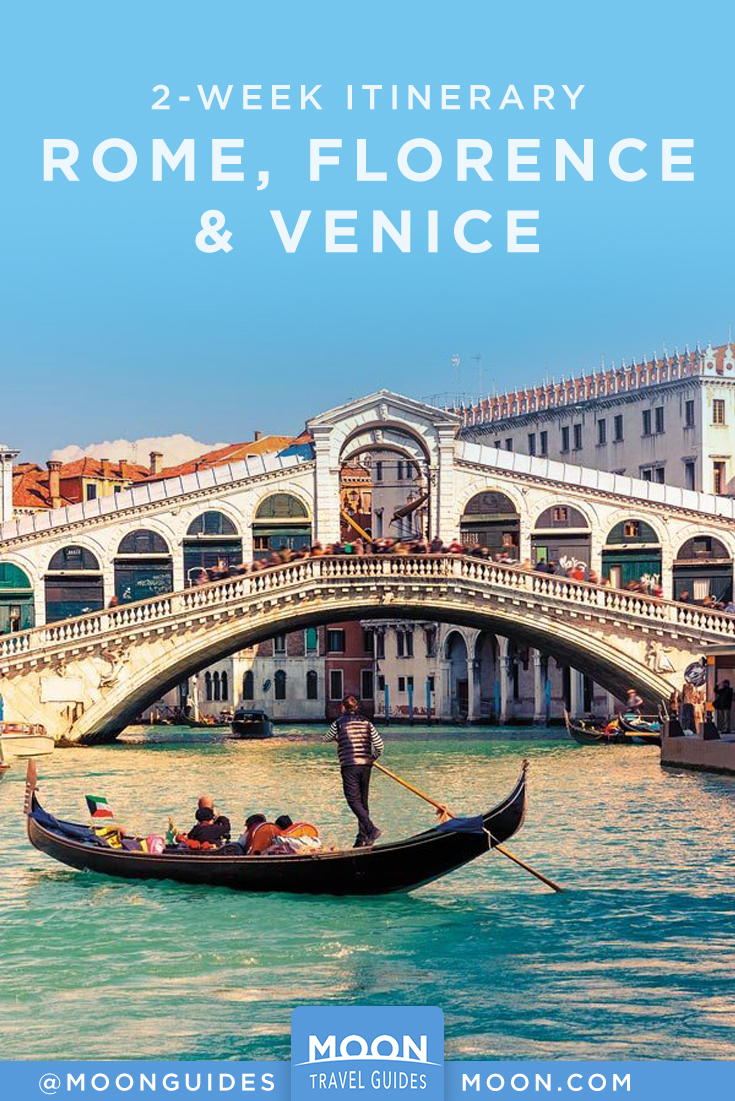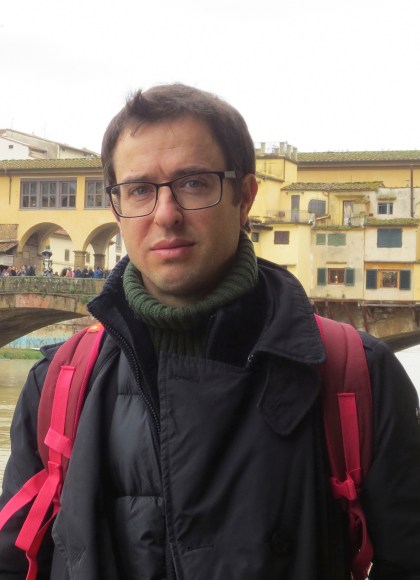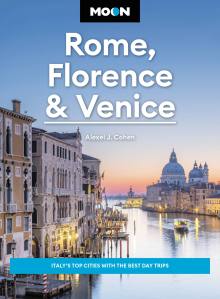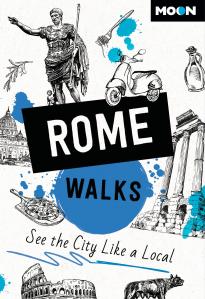Two-Week Best of Rome, Florence, and Venice
Rome is a convenient starting point for a three-city tour of Italy. Most transatlantic flights land directly in the Italian capital and tickets are less expensive than to Florence or Venice, which may require connecting flights. The 327 miles (526 kilometers) that separate the cities are covered by high-speed trains, which are the quickest and easiest way of getting between destinations. A Rome-to-Florence-to-Venice itinerary also allows you to travel from most populated to least populated and from oldest to newest, which can facilitate appreciation and understanding of the cities.
Seeing everything is impossible, and visiting one museum after another will leave you exhausted and unable to absorb anything. You’re better off taking it slow and balancing your days with a mix of sights and everyday activities, like lingering in piazze, searching for the best gelato, and partaking in aperitivo time (happy hour). Using local travel cards like RomaPass, Firenzecard, and Venezia Unica help get the most out of your journey without wasting precious hours in line.
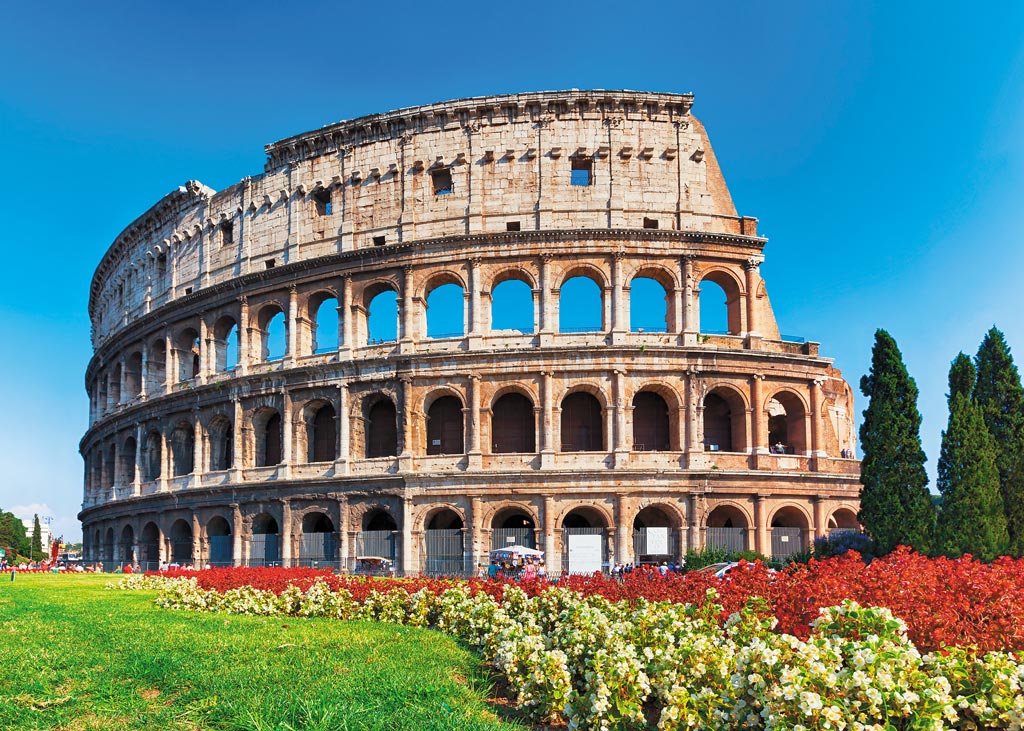
Four Days in Rome
Day 1
Walking is the best cure for jet lag, so after you settle into your room, head out for lunch and a stroll. The pizza al taglio parlors in the center provide a good introduction to Roman pizza. Point to the variety you like and have it wrapped up for takeaway. Wander through Campo de’ Fiori and observe the comings and goings in this busy square. At the first sign of a yawn enter a bar and order an espresso. Although most Romans drink at the counter, outdoor table seating is common.
Afterward ride the number 23, 44, or 280 bus or 8 tram to Aventino and Testaccio. If it’s close to aperitivo order a cocktail at Porto Fluviale and enjoy the buffet that doubles as dinner. The longer you resist sleep the easier it will be to adapt to Italian time.
Day 2
The Colosseum is a sight that cannot be missed. Walk to the ancient stadium, or ride Metro B to Circo Massimo and approach from the south. Skip the lines with your preordered tickets or RomaPass and spend an hour exploring the interior with the audio guide. Then head next door to the Roman Forum, where you can wander through ruins and get a feel for ancient Rome. To see more artifacts, climb nearby Capitoline Hill and visit the Musei Capitolini. Michelangelo designed the square outside the museum and there’s a great view of the city from the adjacent Vittoriano monument.
Walk down to the Jewish Ghetto for a taste of deep-fried artichokes prepared the Jewish way at Nonna Betta or any of the kosher restaurants lining Via del Portico D’Ottavia. Alternatively, ride the number 8 tram to Piramide and swap ancient ruins for 19th-century history. Pay your respects to Keats in the Protestant Cemetery before heading to the covered Testaccio Market. Pick a stand and create an improvised picnic with a beef sandwich, cheese, and bread, washed down with local wine served in plastic cups.
On the way back, explore the residential streets of Aventino and the shaded Giardini degli Aranci (Orange Garden) with a view of the Vatican. Return at night to Monte Testaccio via Metro B for dancing and Roman nightlife, or dine al fresco at one of the informal kiosks along the Tiber River and let your feet have the night off.
Day 3
Zigzag along the pedestrian streets towards Campo De’ Fiori. Browse the market for household souvenirs and order pizza bianca from Il Forno on the northwestern corner of the square. There’s a constant flow of tourists on their way to Piazza Navona, but plenty of scenic side streets leading to the oblong square. Once you arrive admire the fountains and street painters with the help of a gelato from Frigidarium. Musicians play near the fountains and there are many canvases on display. Avoid cafés where waitstaff bait passing tourists, and order your espresso at an authentic neighborhood bar.
The Pantheon is less than ten minutes away and free to enter. After a visit, browse the boutiques alongVia del Corso as you head toward the freshly scrubbed Spanish Steps, which lead to Villa Borghese. Escape the summer heat by cycling or strolling through the city’s largest park and visit the Borghese Gallery (reservations required).
Afterward, walk down to Piazza del Popolo and follow Via Ripetta to the Ara Pacis museum, then dine at Gusto. End the day sitting in front of the Trevi Fountain. The later you arrive, the more likely you’ll score a travertine seat and get a clear shot of the fountain.
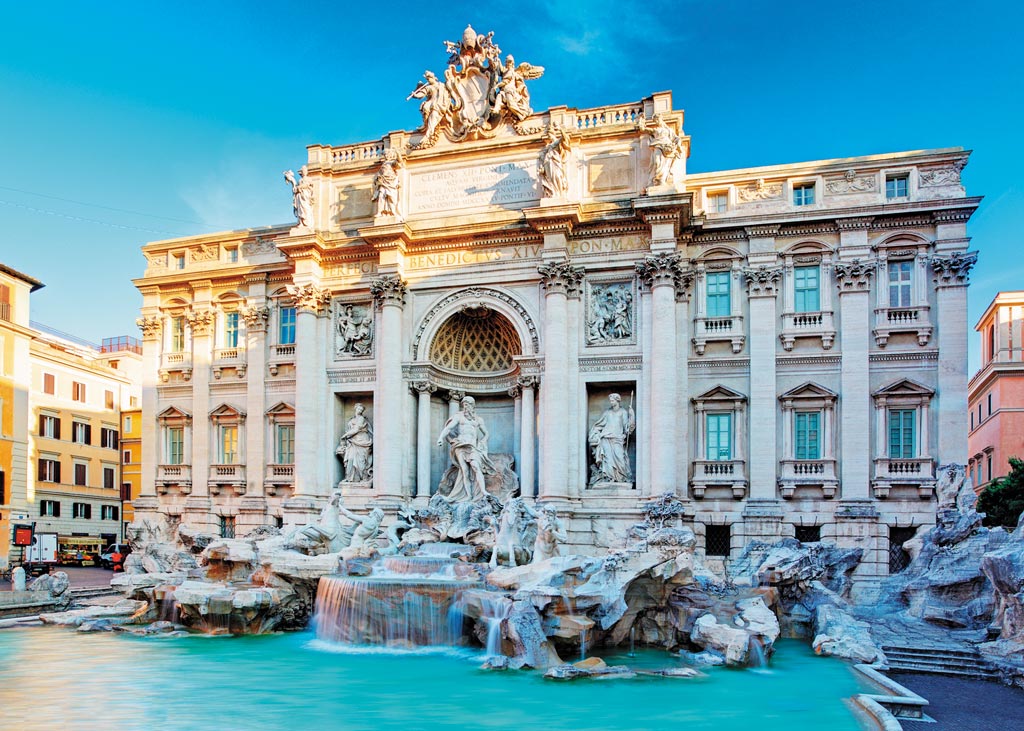
Day 4
Ride Metro A to Ottaviano or walk and follow the pilgrims to Vatican City. Remember to dress appropriately, and arrive early to the Vatican Museums or make reservations to beat the masses. Inside you can choose from several itineraries and could easily spend an entire day here. Most visitors beeline to the Sistine Chapel, but there are plenty of less-crowded parts of the museum such as the first-floor antiquities collection near the entrance.
Once you’ve gotten your fill, take the guided bus tour of the Vatican gardens or enjoy a drink outside at the museum café before entering St. Peter’s Basilica. Light a candle and descend into the crypt to pay homage to past popes, then climb your way to the top of Michelangelo’s cupola. The elevator only goes so far and you’ll need stamina to reach the highest point in the city. If you arrive on Sunday morning you can join the faithful in the square below and receive the pope’s blessing.
The nearby streets of Borgo Pio and Borgo Vittorio have catered to pilgrims since the Middle Ages and are lined with eateries and souvenir shops. Follow either of these parallel roads to Castel Sant’Angelo. There’s a good view from atop the ancient mausoleum and a convenient rooftop bar. Walk or catch a bus to Trastevere and mingle with the evening revelers in Piazza Trilussa. Order cacao pepe pasta at Da Giovanni or any Roman trattoria and explore the streets of this lively neighborhood packed with bars and clubs.
Optional: Add an Extra Day in Rome
Catch the Freccia del Mare commuter train from Ostiense station to Ostia Antica and wander among the well-preserved ruins of an ancient Roman city. Explore baths, temples, shops, and villas to understand how everyday life was two thousand years ago. Afterward have lunch in the small medieval village near the entrance to the archeological site or take the train onward to the beach and order pasta alle vongole (spaghetti with clams) at any of the seaside establishments. On the way back get off at the Magliana station and explore the EUR neighborhood. There are dozens of eateries along Viale Europa and Viale America, along with Fascist-era architecture and a man-made lake where Japanese cherry blossoms bloom every spring and paddleboats can be rented.
Via Appia Antica is closer to the center and takes a morning or afternoon to visit. It’s a 15-minute bus ride on the 118 from Circus Maximus or a 45-minute trek on foot to this ancient highway. When you get there rent a bike from the park office or saddle up and set off on a leisurely trot down the Queen of Roads.
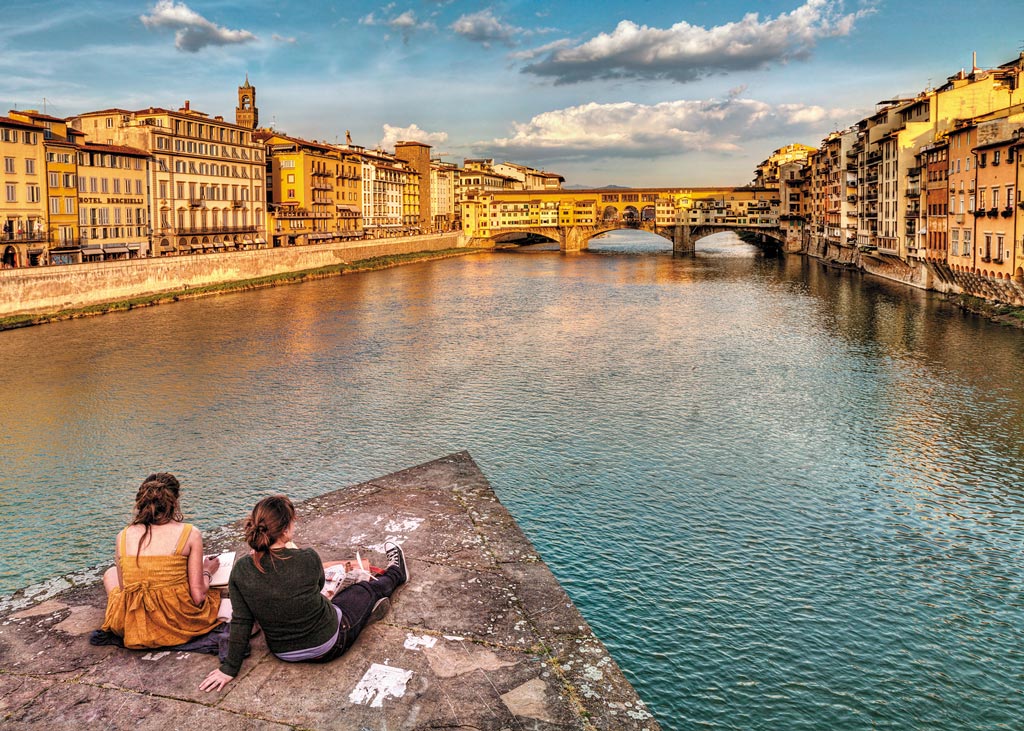
Three Days in Florence
Day 5
The journey from Rome to Florence on board Italo or Trenitalia trains takes less than two hours. Both operators run frequent departures from Termini and Tiburtina stations. Depart midmorning so you can enjoy lunch in Florence. There are taxis and buses waiting outside Santa Maria Novella station, but the historic center of Florence is small and flat enough to navigate on foot, with no two monuments more than 20 minutes apart.
If you’re driving, consider stopping in Assisi, burial site of St. Francis, or Siena. Florence’s historic rival is famous for its shell-shaped piazza, annual horse race, and enormous cathedral.
After you’ve checked-in, find a small trattoria like Trattoria Sostanza and discover the difference between Florentine and Roman gastronomy. Order papa al pomodoro or T-bone Fiorentina steak from Chianina cattle raised along the Tuscan coast. The two covered markets in the center are good places to learn about local culinary traditions. The 2nd floor of Mercato Centrale is a food emporium, while downstairs you can sample tripe sandwiches, a Florentine specialty. Otherwise grab a booth at Trattoria da Rocco inside Mercato di Sant’Ambrogio.
You can work off any meal by hiking to Basilica San Miniato al Monte via the less-traveled footpath, which has a panoramic payoff. Just cross Ponte alle Grazie bridge and follow the brown signs through the old city gate before turning right and up the grassy path. On the way back follow the medieval walls to Forte Belvedere, where free outdoor sculpture exhibitions are organized on the terrace overlooking the city, and enter the Pitti Palace gardens from the back entrance. If there’s time, catch the sunset over Ponte Vecchio from nearby Ponte Santa Trinità. Otherwise order a Negroni cocktail, first mixed in Florence in 1919, at Negroni or any of the bars lining Piazza Santo Spirito. During the summer, head to the riverside beach where DJs play lounge music until late.
Newsletter Signup
By clicking ‘Sign Up,’ I acknowledge that I have read and agree to Hachette Book Group’s Privacy Policy and Terms of Use
Day 6
Start the day with an espresso from either of Ditta Artiganale’s two locations and buy a Duomo Card from the ticket office in Piazza San Giovanni to experience five Florence monuments. There are 463 steep steps to the top of the Duomo, but seeing the inside of Brunelleschi’s masterpiece is worth the effort and culminates in a 360-degree view of the city. The Duomo Card also includes entry to the Campanile bell tower and beautifully renovated Museo dell’Opera, where you can learn how Florence’s cathedral was built. Just a few blocks south is Piazza della Signoria, the political center of the city, where Palazzo Vecchio imposingly stands and you can set off on another bell tower ascent.
Florentine pizza at Cucina Torcicoda or thick local steaks from Mario can satisfy appetites before visiting the Museum of San Marco, filled with colorful frescoed cells where monks once reflected. Nearby, the Accademia houses the statue of David, and lines stretch down the street and around the block in summer. It’s wise to reserve tickets in advance as only 300 visitors are allowed in at a time.
Next pay homage to Michelangelo, who grew up in Florence and is buried inside Basilica di Santa Croce. Arrive a couple of hours before closing (5:30pm) if you want to get in. Then take a short detour to Vivoli for gelato. Try their crema de’ Medici (cream-flavor) gelato in a cone or a cup. At night, wineries offer cellars full of local Tuscan vintages, served with cured meats and cheese. Coquinarius and Le Volpe e L’Uva are both good options with appetizers that can substitute for dinner.
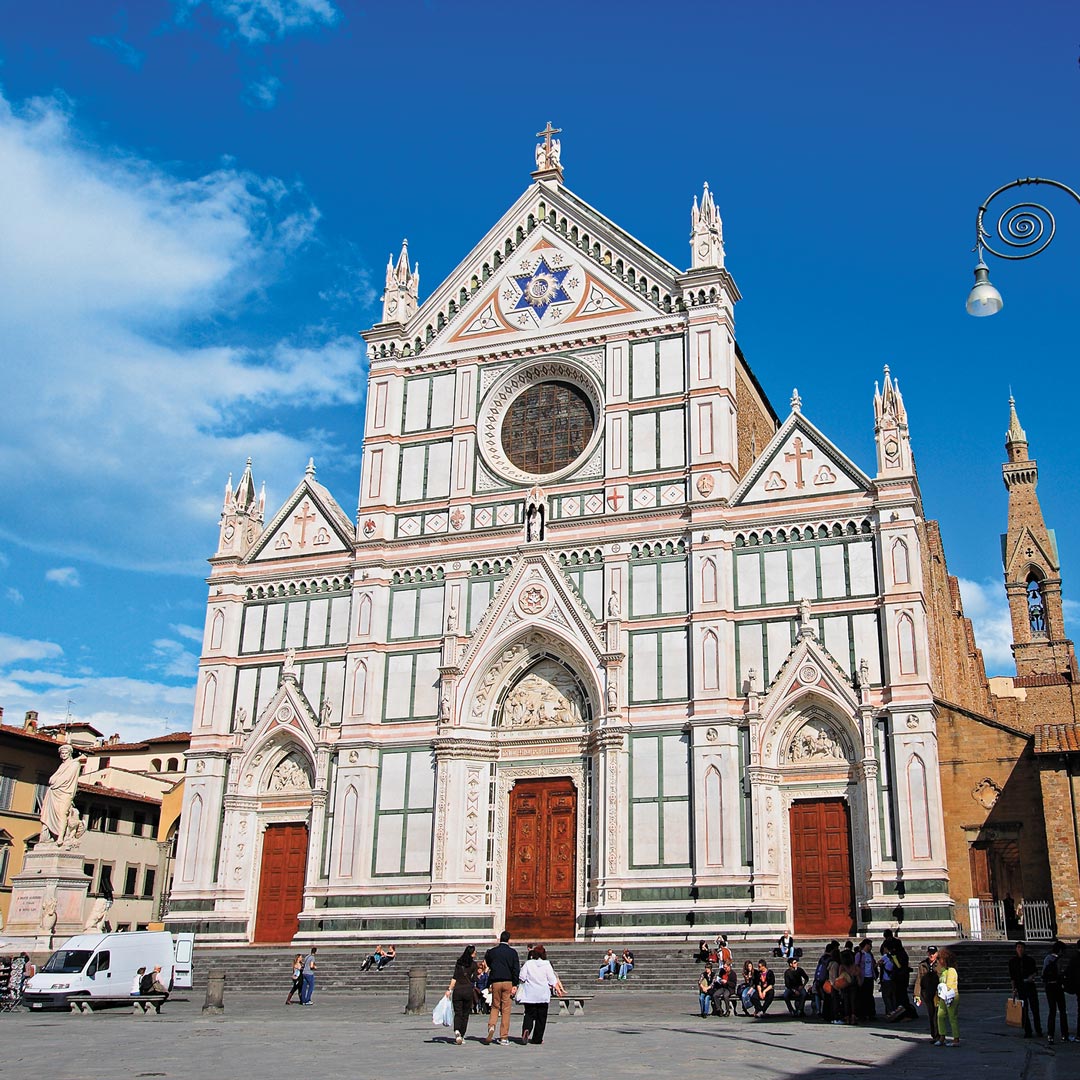
Day 7
Mornings are the only time to see the city’s Last Supper frescoes, which were painted inside Florence’s smaller churches like Cenacolo di Ognissanti and Cenacolo di Sant’Apollonia and are often overlooked by tourists. It’s a unique opportunity to be alone with a masterpiece. After you’ve seen a handful enjoy your own supper with an enormous sandwich from All’Antico Vinaio.
Brace yourself for crowds and join the line at the Uffizi, home to works by Botticelli and Michelangelo. At the end of the 2nd-floor galleries, take a break from art on the terrace of the museum café overlooking Piazza della Signoria. The Uffizi is considerably smaller than the Vatican Museums and you can see it all in a couple of hours. If the line is too long or you want to discover the city’s most underrated museum, head to the Bargello National Museum nearby and prepare to be blown away by another David with far fewer admirers. For a caffeine pick-me-up stop into a local bar, or pull up a lounge chair at Amblé and start the evening with a fruit cocktail. The rustic Osteria Antica Mescita is a reliable choice for lunch or dinner, but if you prefer to sample Michelin-starred flavors and dine in a romantic interior, reserve a table at La Bottega del Buon Caffè.
Optional: Add an Extra Day in Florence
Fiesole is a half-day excursion overlooking the city with stunning views of Florence. You can get there on the number 7 bus from the train station in around 20 minutes or rent an e-bike from Florence by Bike. During the summer there’s a musical festival and evening concerts are held in the ancient Roman amphitheater.
The hills around Florence are dotted with medieval villas where influential families retreated during hot Renaissance summers. There are fine interiors and manicured gardens to explore with fountains, sculptures, and views of the Duomo in the distance. Beyond these elegant estates is Tuscany, featuring some of Italy’s most iconic landscapes. Use Enjoy or Car2Go, Florence’s car-sharing services, or rent a scooter from Walkabout or Tuscany Vespa Tours and motor down the SP 222 into Chianti country to sample the latest vintages from roadside vineyards.
If you prefer not to drive, board a regional train from Santa Maria Novella station to Lucca. Within an hour you’ll be inside one of Italy’s best-preserved fortified towns and can cycle along ramparts and climb two medieval towers. From September to June soccer fans in Florence can walk or catch a bus to Artemio Franchi stadium. Home games are usually played on Sunday afternoons and tickets are available at the gates. Wear purple if you can or buy a supporter’s scarf from the kiosks outside.
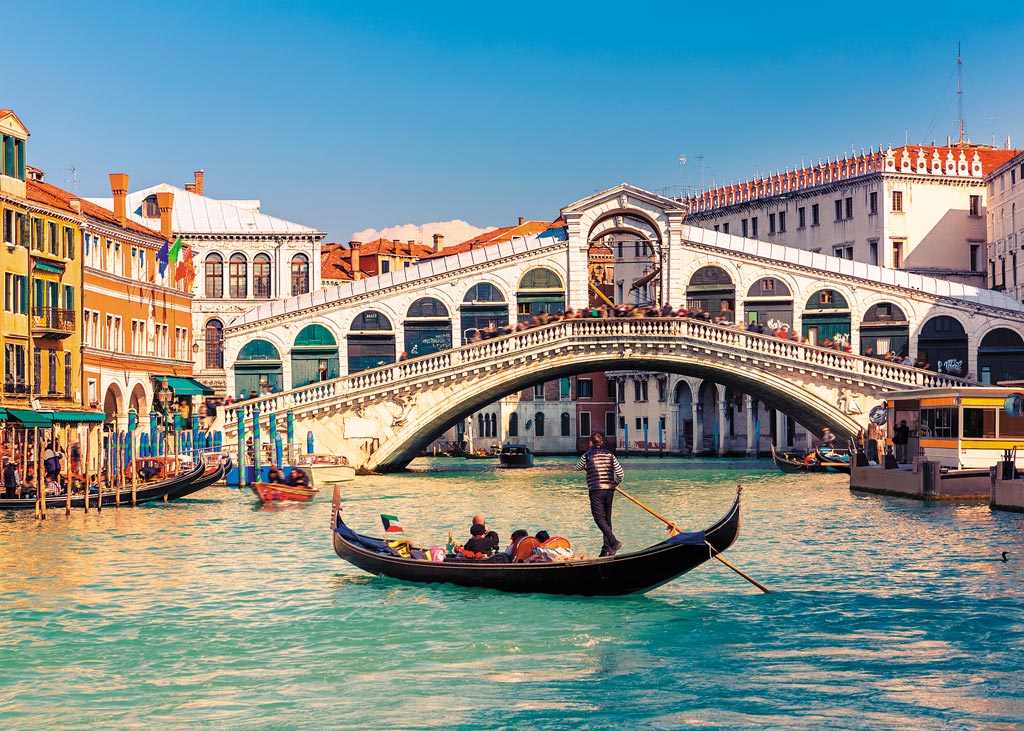
Three Days in Venice
Day 8
If you’re driving from Florence to Venice, consider stopping in Ferrara or Bologna, two cities famous for their food. Both are also on the same high-speed train line that connects Rome, Florence, and Venice, which make them convenient detours. Journey time by train from Florence to Venice is around two hours with several stops. Venice is the end of the line, and Santa Lucia station drops passengers off on the city’s doorstep. You can reach accommodation on foot with the help of porters who will cart your bags or via water taxi on the Grand Canal, which is more expensive but also a lot of fun.
After you’ve settled into your hotel, follow the yellow signs to St. Mark’s Square and take the secret tour of the Doge’s Palace to discover why they call it the Bridge of Sighs. Enter St. Mark’s Basilica next door and listen to the audio guide explain the meaning behind the mosaics. Restaurants are expensive in Venice, but snacking at local bars is affordable and a chance to sample lagoon fish transformed into tapas-like appetizers called cicchetti. Try All’Arco across the Rialto Bridge and near the animated fish market. From there you can hitch a €2 ride over the Grand Canal in a gondola ferry and spend the evening in Campo Santo Stefano listening to Vivaldi.
Day 9
Purchase a ferry pass and go island hopping on the 4.1 or 4.2 vaporetto from Fondamente Nuove. Get a window seat or stand on deck for the best views. Get off at the first stop on Murano. From there, you can visit workshops and watch a glassblowing demonstration at Vetreria Artistica Emmedue. Some furnaces charge visitors a small fee while others are free.
Continue on the 12 vaporetto from the Faro station to Burano. It’s a 45-minute ride past lagoon wildlife, and you can order fried calamari and cold beer at Fritto Misto near the main dock once you get there. Afterwards, circumnavigate the island on foot and put your camera to good use. Along the way are colorful houses and galleries where locals make and sell textiles and glassware.
Just north of Burano is the nearly uninhabited island of Torcello. There’s only one path to follow unless you decide to cross the Ponte del Diavolo (Devil’s Bridge) and follow the dirt trail to Santa Maria Assunta cathedral. On the way back stop at Locanda Cipriani, where Hemingway wrote, drank, and slept, before you return to Venice by vaporetto as the sun sets over the lagoon.
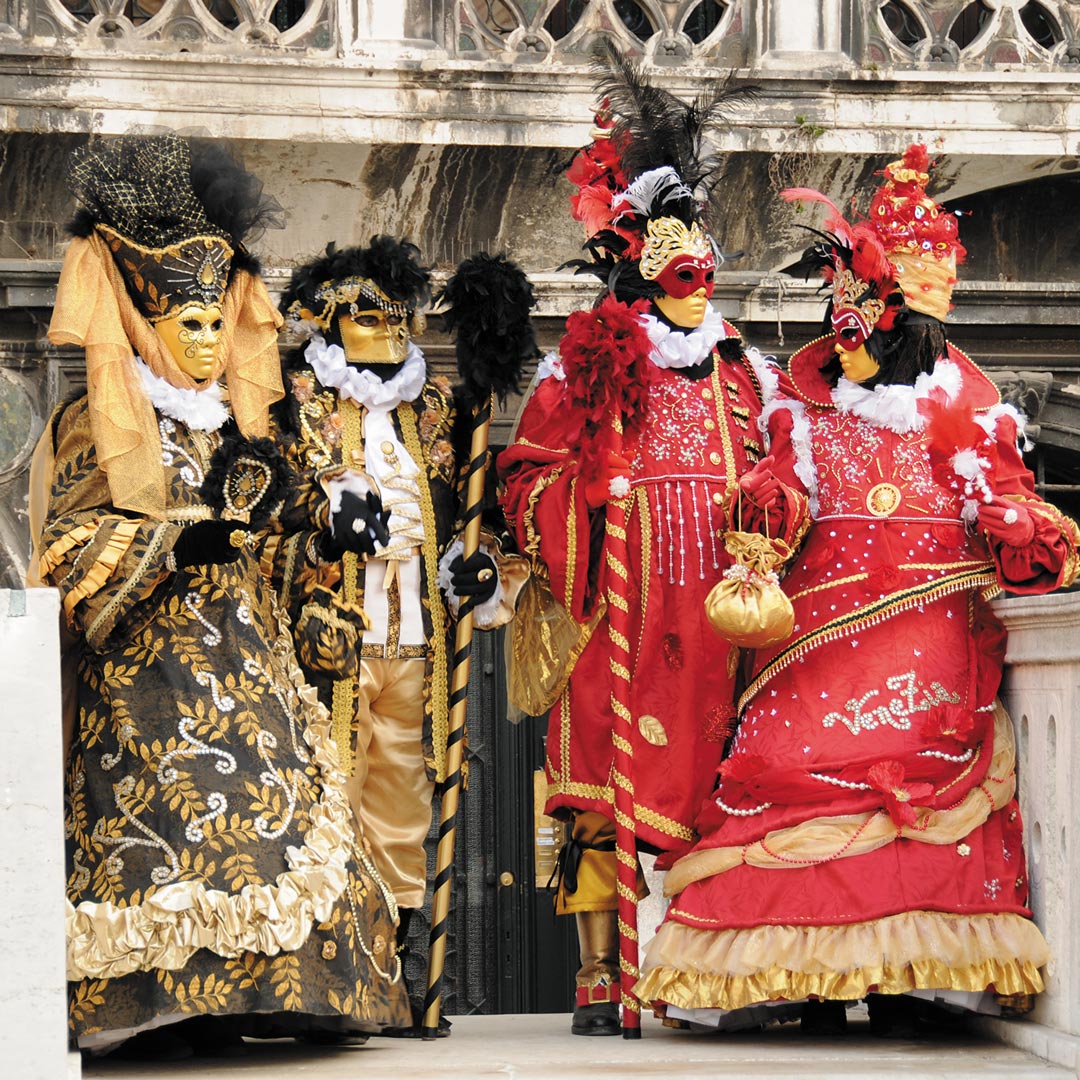
Day 10
Wake up early to watch the fishmongers and greengrocers under the colorful Rialto market and shop for masks along the adjacent streets. Atelier Pietro Longhi finding costumes and getting into the Carnevale spirit. Head to any of the traditional bacari bars nearby and accompany every meal with locally produced sparkling prosecco wine. If you don’t want to wander unknowingly past Marco Polo’s house or the oldest ghetto in Europe, spend a couple of hours with a certified guide who can provide an insightful perspective on the city. Take a break inside a pastry shop and sample as many delicacies as your appetite can handle. There’s a different sweet for every season, but burranei are baked all year long.
Hop a vaporetto to the Gallerie dell’Accademia for a glimpse of Venetian Renaissance art. Alternatively, if you prefer contemporary canvases, keep walking to the Guggenheim Foundation and Punta della Dogana at the very tip of Dorsoduro. Escape the narrow streets of the center and take a walk along the sun-drenched Fondamenta Zaterre promenade and stop for a gelato at Da Nico. At night the squares near the university fill up with revelers. Campo Santa Margherita is the most animated, with street musicians and improvised parties that spill out into the square on weekends. If you haven’t tried Venetian risotto yet, make your way to Osteria da Codroma.
Optional: Add an Extra Day in Venice
It’s difficult to tire of Venice, but if you long for a different landscape spend a morning cruising up the Brenta Canal with Il Burchiello and take the train back. You could also ride a vaporetto out to the Lido and lie on the beach or rent a bike near the main landing and cycle to the nature reserve where Goethe was inspired and Mussolini played golf.
Back in Venice, do your own sailing with a boat from Brussa Is Boat. A license isn’t required but you will need to learn the rules of the lagoon. If that sounds too complicated, try kayaking through the city with Venice by Water or take a SUP tour with Eliane Argine.
If you’re in town during the Venice Biennale (May-November) art and architecture festival, visit the pavilions in the public gardens and installations set up around the city. All the gambling houses in the city have closed except one—place your bets at the Venice Casino and play familiar American table games or harder-to-master European games until 2am.
Back to Rome
Day 11
It takes a little over 3.5 hours to get back to Rome by train. Leave Venice early enough to enjoy a final meal in the capital. Take the subway, tram, or bus to Trastevere for a tasty farewell, and if you haven’t ordered amatriciana or carciofi alla romana yet, this is the time to do so. Before heading off to the airport, climb the nearby Gianicolo Hill for one last look at the Eternal City and a farewell to Italy.
Build your Europe travel bucket list
Get inspired and get ready for adventure with the ultimate guide to Europe’s best trips!
Newsletter Signup
By clicking ‘Sign Up,’ I acknowledge that I have read and agree to Hachette Book Group’s Privacy Policy and Terms of Use
Pin It for Later
